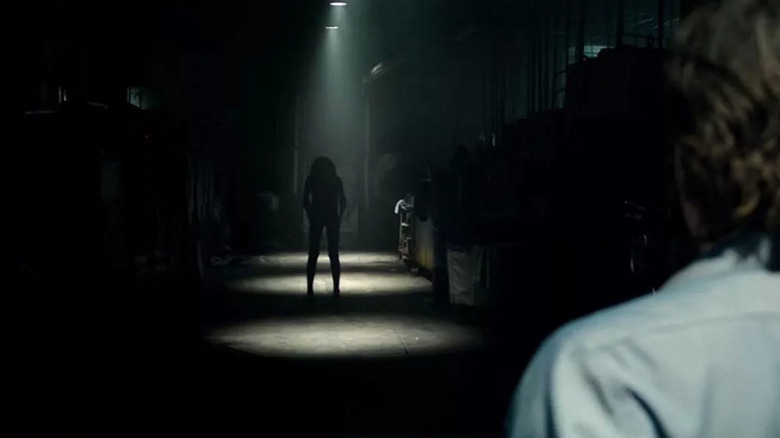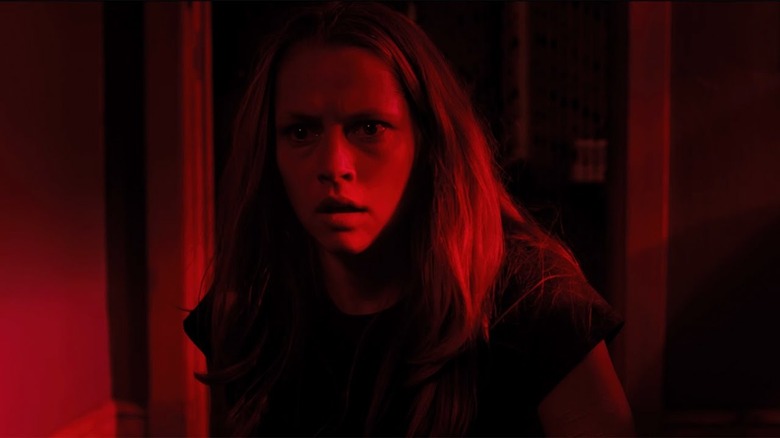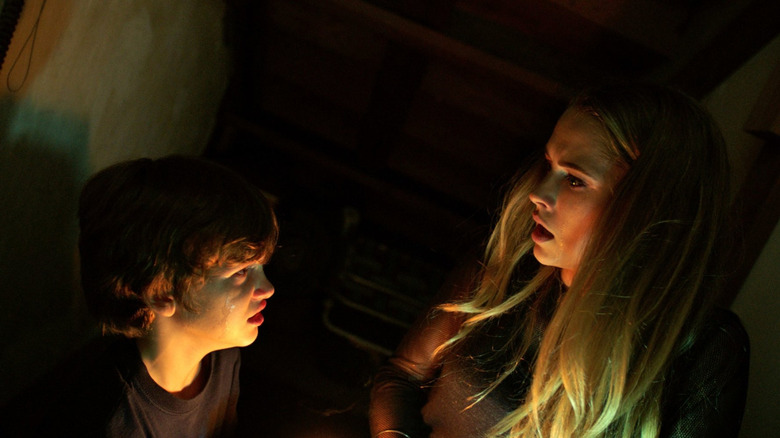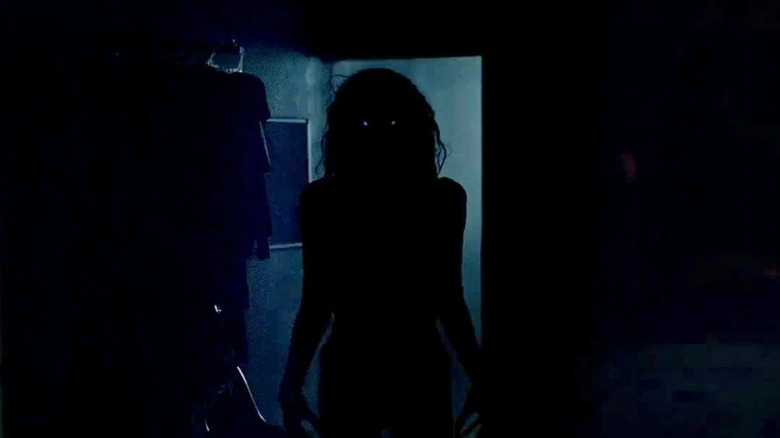Lights Out Is Making Waves On Netflix, So Let's Revisit The Horror Movie From The Director Of Shazam
The horror genre is filled with Cinderella stories where independent filmmakers hit it big with a compelling short film or shoe-string-budget feature, leading to a successful career making studio pictures. Think of the humble beginnings of Sam Raimi and "The Evil Dead" or the Troma roots of James Gunn; they're both horror mavens who went on to direct some of the most expensive and globally successful blockbusters of recent memory. Another director who followed this micro-to-macro trajectory is David F. Sandberg, the Swedish filmmaker behind the "Shazam!" films for the DC Extended Universe who got his start making no-budget horror shorts under the online pseudonym "ponysmasher."
While Sandberg's early work covers a wide range of genres, his second horror short, "Lights Out," became a viral sensation and led to his first feature-length film. The story centers on a terrifying something that can only be seen when the lights are off, allowing the short to serve as a brilliant exercise in tension using just a hallway and a light switch. The short film grabbed the attention of producer Lawrence Grey who brought screenwriter Eric Heisserer and producer James Wan on board to help Sandberg bring "Lights Out" to the big screen in 2016.
Expanding the lore behind the monster cloaked in darkness and bursting with seriously impressive jump scares, the result was a box office hit, earning over $148.8 million against a $5 million budget. Now, seven years later, "Lights Out" is seeing a resurgence in popularity on Netflix, as folks who were a bit too young to catch the film when it first debuted are now old enough to bravely face off with the malevolent spirit named Diana.
Trauma as horror before it was cool
While the short film was less about story and more about executing the perfect jump scare, the "Lights Out" feature adaptation is a ridiculously effective PG-13 horror film and was also tackling themes of trauma and how it can manifest in horrifying ways long before Ari Aster's "Hereditary" ushered in a wave of terror-trauma tales. It is revealed that the spindly creature lurking in the dark is the spirit of a woman named Diana — a tortured young woman who befriended Maria Bello's Sophie while they were both in treatment at a mental health facility — who is terrorizing Rebecca (Teresa Palmer) and her little brother Martin (Gabriel Bateman), Sophie's children.
Due to the nature of Diana's need to stay out of the light, "Lights Out" zeroes in on our deeply-rooted fears of the dark and unknown and uses them as a cudgel in the face of emotional distress. It shouldn't come as a surprise that viewers have been so scared that they've put out warnings on social media telling folks not to watch the film in the dark or at night, not to watch it alone, and some even claiming the film kept them up all night in fear.
Twitter user @itsme_krrishm went as far as to write "WARNING : If you are a faint-heart person, do not watch it alone," before recommending the film. User @stfuaiyanna recalled seeing the film when it debuted in theaters, tweeting, "I'll never forget the day I first watched that [because] it's the first time I saw somebody be so terrified, [they walked] out [of] a movie theater. I was tickled a bit."
A traumatizing watch
"Lights Out" isn't just creepy to some viewers, it's downright life-affecting. On Twitter, user @saigondjo listed the film as one of two that "traumatized" her, putting the scare-fest on the same level as the incredibly graphic and violent "Megan is Missing." She also noted that she hadn't watched the film since its debut in 2016 and was contemplating revisiting the horror film now that she's older, but of course, the fears of childhood can be difficult to overcome.
Another fan, @Tristainnn, praised Netflix for putting the film on the platform, declaring it "a horror movie that's worth watching." The self-described "horror fanatic" also confessed that the last time he watched the film, he couldn't sleep at night. Horror can impact audiences in a multitude of different ways, but making a film so effective that viewers struggle to sleep is a sure fire sign of a successful scare. User @aevsify shared his sentiments, promoting "Lights Out" to someone asking for movie recommendations but warning, "it's scary actually, [you] might have a sleepless night."
In perhaps one of the boldest moves, @iingenitoo named "Lights Out" as the scariest movie they'd ever seen in response to a prompt by Blumhouse, one of the industry's leading horror production companies. This is the studio that put out films like "Sinister," "The Black Phone," "Insidious," "The Invisible Man," and "Get Out," so it's really saying something when a fan is willing to put "Lights Out" on the same level of fright.
David F. Sandberg is returning to horror
This tracks considering "Lights Out" feels like a spiritual prequel to other recent hit horror films "Smile" and "Skinamarink," albeit in very different ways.
"Smile" and "Lights Out" both use terrifying imagery and jump scares as a means to showcase the way trauma can absolutely overwhelm someone's psyche, while "Skinamarink" and "Lights Out" weaponize our own imaginations and the ways our brains play tricks on us while trying to see in the dark. Both films have been wildly popular over the last year, so it's no wonder a companion piece like "Lights Out" is also scaring viewers from across the globe.
"Lights Out" finding a new audience on streaming is great news for David F. Sandberg, who has already stated that he fully intends on returning to the horror genre now that "Shazam!" and "Shazam! Fury of the Gods" are in the rearview. While the latter film may not have performed quite as well as DC and Warner Bros. may have hoped, it allowed Sandberg to make a clean break from the superhero genre. Folks talking about "Lights Out" once again is a good thing for whatever he's got cooking next in the world of horror, as it's proof that audiences are interested in his style of scares.
Sandberg is also responsible for helming "Annabelle: Creation," arguably the best film in the series centered around the creepy, haunted doll. I've already written an entire piece about why Sandberg's return to horror is something we should all be celebrating, so the fact new folks are freaking themselves out while watching "Lights Out" only adds fuel to the fire. There's a lot to critique about the streaming era (like how shows and movies continue to get pulled at any given moment), but the ways films continually find new audiences is always exciting to see.



